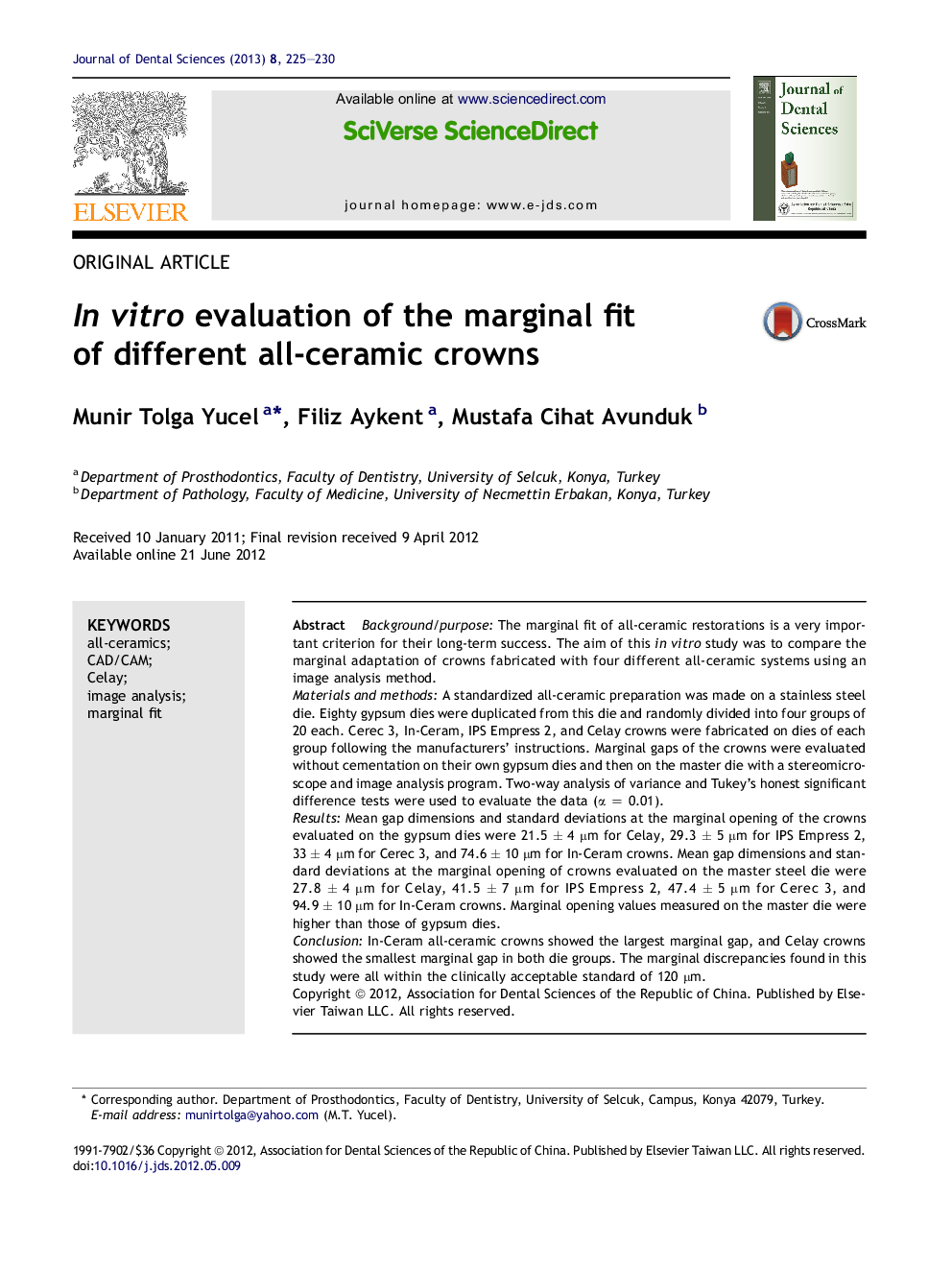| Article ID | Journal | Published Year | Pages | File Type |
|---|---|---|---|---|
| 3144618 | Journal of Dental Sciences | 2013 | 6 Pages |
Background/purposeThe marginal fit of all-ceramic restorations is a very important criterion for their long-term success. The aim of this in vitro study was to compare the marginal adaptation of crowns fabricated with four different all-ceramic systems using an image analysis method.Materials and methodsA standardized all-ceramic preparation was made on a stainless steel die. Eighty gypsum dies were duplicated from this die and randomly divided into four groups of 20 each. Cerec 3, In-Ceram, IPS Empress 2, and Celay crowns were fabricated on dies of each group following the manufacturers’ instructions. Marginal gaps of the crowns were evaluated without cementation on their own gypsum dies and then on the master die with a stereomicroscope and image analysis program. Two-way analysis of variance and Tukey's honest significant difference tests were used to evaluate the data (α = 0.01).ResultsMean gap dimensions and standard deviations at the marginal opening of the crowns evaluated on the gypsum dies were 21.5 ± 4 μm for Celay, 29.3 ± 5 μm for IPS Empress 2, 33 ± 4 μm for Cerec 3, and 74.6 ± 10 μm for In-Ceram crowns. Mean gap dimensions and standard deviations at the marginal opening of crowns evaluated on the master steel die were 27.8 ± 4 μm for Celay, 41.5 ± 7 μm for IPS Empress 2, 47.4 ± 5 μm for Cerec 3, and 94.9 ± 10 μm for In-Ceram crowns. Marginal opening values measured on the master die were higher than those of gypsum dies.ConclusionIn-Ceram all-ceramic crowns showed the largest marginal gap, and Celay crowns showed the smallest marginal gap in both die groups. The marginal discrepancies found in this study were all within the clinically acceptable standard of 120 μm.
